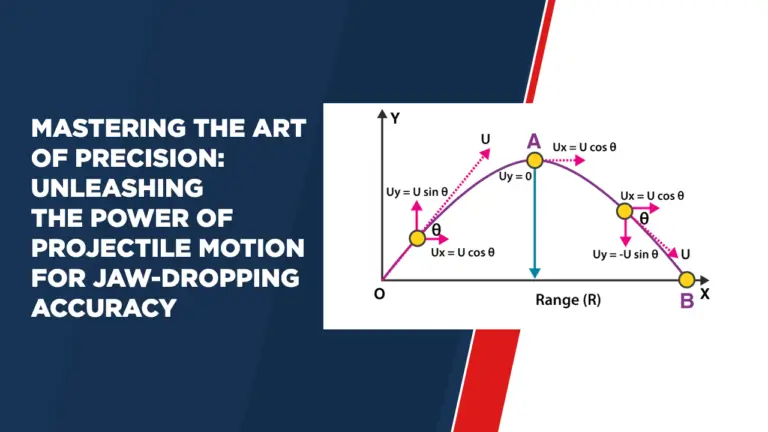Mastering the Art of Precision: Unleashing the Power of Projectile Motion for Jaw-Dropping Accuracy!
Introduction to Projectile Motion
Projectile motion is a fascinating concept in physics that describes the motion of an object projected into the air under the influence of gravity alone. The trajectory of an object forms a parabolic curve, and its speed is affected by both its initial velocity and the gravitational force acting on it. Understanding the principles of projectile motion is essential to a variety of fields, including physics, engineering, and sports.
What is Projectile Motion?
Projectile motion refers to the motion of an object that is projected into the air with an initial velocity and then follows a curved path due to the gravitational pull. This motion occurs in two dimensions, usually horizontal and vertical. In the absence of air resistance, horizontal motion remains the same, while vertical motion is affected by gravity.
Projectile Motion Formula
The key to understanding projectile motion lies in its equations. Horizontal and vertical movements are independent of each other. The horizontal distance traveled by the projectile can be calculated using the formula:
Horizontal Distance (x)=Initial Horizontal Velocity (u) × Time (t)
For the vertical motion, the distance can be found using the formula:
Vertical Distance (y)=Initial Vertical Velocity (v_0) × Time (t)−1/2×Acceleration due to Gravity (g) × Time (t)2
Projectile Motion Equations
The complete set of projectile motion equations combines the horizontal and vertical motions:
Horizontal motion equation: x=u×t
Vertical motion equation: y=v_0×t−gt2/2
where u is the initial horizontal velocity, v_0 is the initial vertical velocity, t is time, and g is the acceleration due to gravity.
Projectile Motion Derivation
The derivation of the projectile motion equations involves splitting the initial velocity into horizontal and vertical components. By analyzing the forces acting on the object, equations can be derived for both dimensions. The horizontal component remains constant throughout the motion, while the vertical component is affected by gravity.
Projectile Motion Examples
- Tennis serve:
When a tennis player serves the ball, it follows a projectile motion trajectory. The player provides the initial velocity, and the ball follows a parabolic path until it reaches the opponent’s court.
2. Cannon Ball Trajectory:
Historically, cannons were used to fire cannon balls over long distances. The principles of projectile motion were applied to target and hit distant targets with precision.
Conclusion
Projectile motion is a fundamental concept that describes the interplay between initial velocity, gravity, and trajectory. By understanding the equations, derivations, and real-world examples of projectile motion, we gain insight into the mechanics of objects in motion. Whether in sports, engineering or physics, the principles of projectile motion remain a cornerstone of understanding motion in two dimensions.




